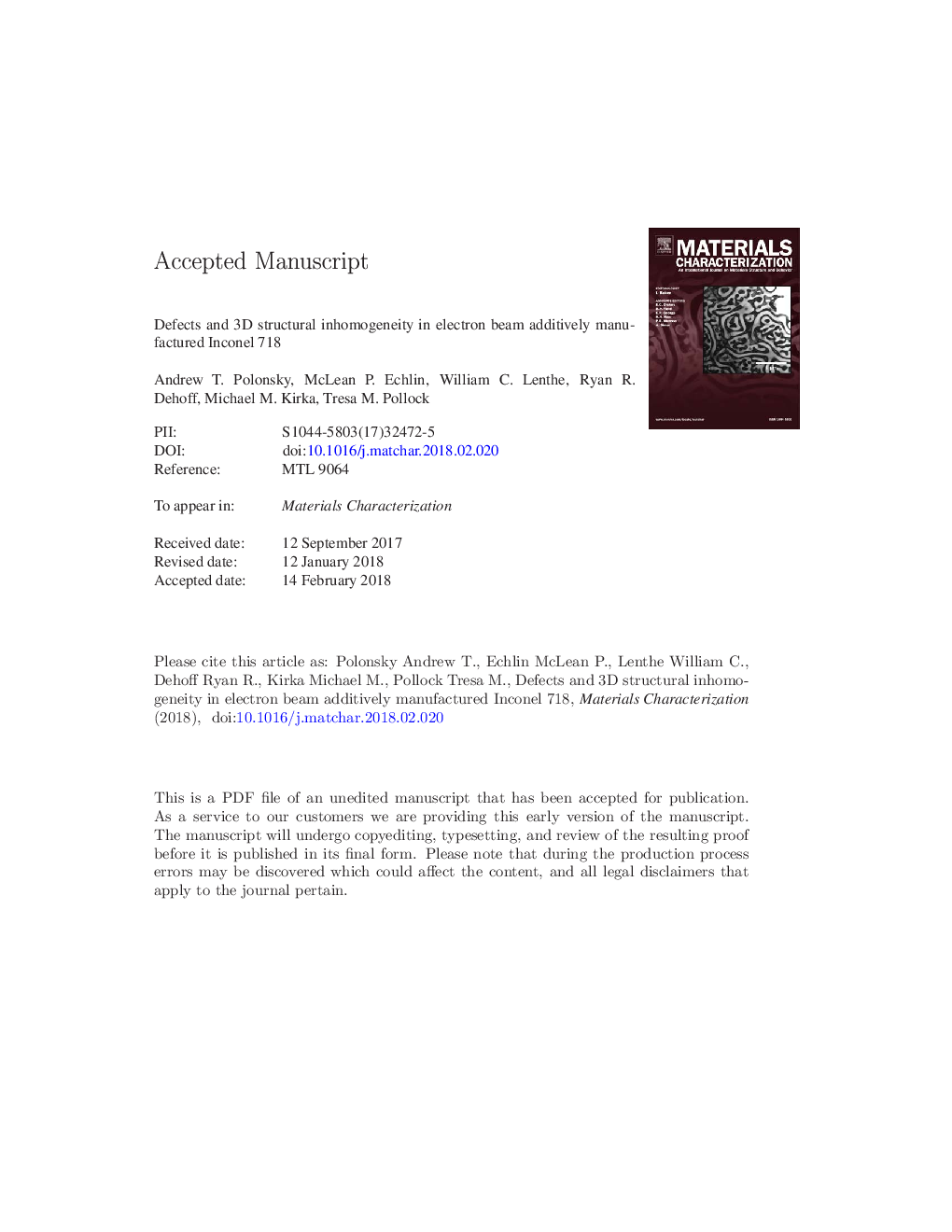| Article ID | Journal | Published Year | Pages | File Type |
|---|---|---|---|---|
| 11020093 | Materials Characterization | 2018 | 28 Pages |
Abstract
Material structure and defects created during additive manufacturing contribute to the variability in mechanical properties of these parts, limiting their use for critical applications. Three-dimensional crystallographic, structural, and chemical information in electron beam melted Inconel 718 was collected from the sub-micron to the millimeter scale using the TriBeam tomography system. The relationship of defects to the surrounding microstructure has been studied in detail. Lack of fusion defects created sharp discontinuities in the grain morphology that extended several build layers beyond the layer where the defect originated. Nitrides and carbides in the size range of 1.25â¯Î¼m to 10â¯Î¼m were observed throughout the volume, with pronounced nitride clustering. The similarities between solidification in additive manufacturing and traditional manufacturing processes are demonstrated by the comparable size and distribution of carbides measured for industrial-scale samples of 718. Defects created during additive manufacturing cannot be easily remedied via standard post-processing techniques, and will likely diminish the mechanical performance of additively manufactured parts.
Related Topics
Physical Sciences and Engineering
Materials Science
Materials Science (General)
Authors
Andrew T. Polonsky, McLean P. Echlin, William C. Lenthe, Ryan R. Dehoff, Michael M. Kirka, Tresa M. Pollock,
